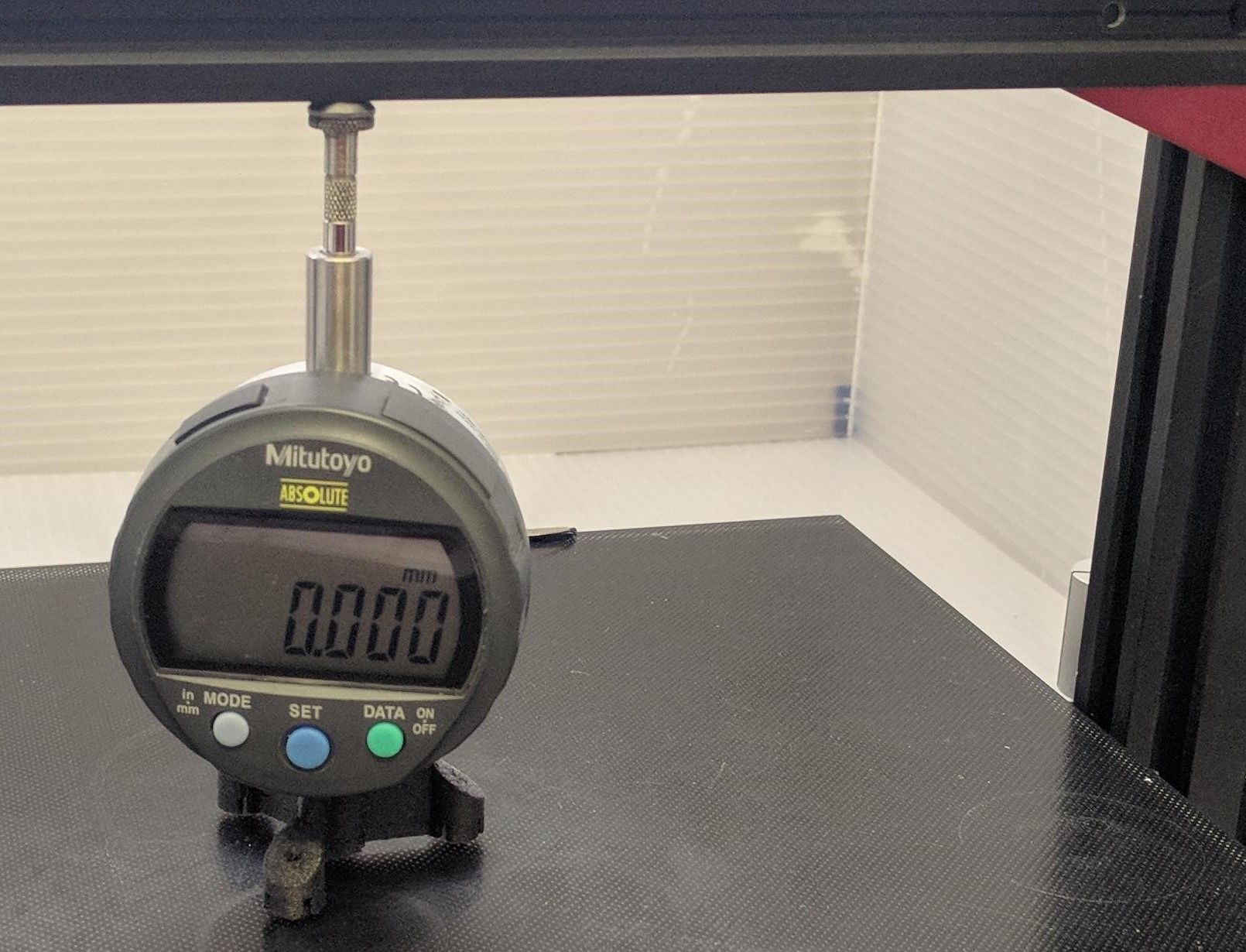Z-Wobble vs temperature instability - Video
-
@jens55 said in Z-Wobble vs temperature instability - Video:
If your printer is perfect in any other way (which by definition excludes a bed slinger IMHO),
The canonical desktop 3D printer (Prusa MK3) is a bed slinger.

(And it runs on a 8 bits processor and has no wifi)
-

To get an idea of the bed vertical issue I made some Z measurements on a CR10S pro with a heated glass bed. A dial gauge sat in the center of the bed with the plunger pushing up on the bottom of the 2020 X axis extrusion. This setup is mechanically rigid and repeatable but the digital gauge can’t take the heat so quick measurements are needed when the bed is over 45C.
First test: Heating the 400W bed at the full power starting at 20C and stopping at 40C. This creates a large temperature difference between the top and bottom of the bed causing the bed center to lower 100um. Then with the heater turned off the bed temperature equalizes down to 30C with the final bed center 10um lower than at 20C.
Second test: Bed set to 35C with the bed temperature cycling 0.3C over a 6 second on/off heating cycle. When the heater is on the bed quickly bounces down about 10um then slowly returns.
Third test: Setting the bed temperature to 110C and waiting about 10 minutes. Just before the 110C temperature is reached and the heater is still fully on, the bed is 133um lower. Allowing several hours for thermal equilibrium to be reached inside an insulating corrugated plastic enclosure before the next measurements are made. The warm enclosure air is 45C while the bed heater cycles on for 2 seconds and off for 2 seconds maintaining the bed at 110C and varying 0.1C. The bed height is now 100um lower that at 20C and it still bounces down a further 6um when the heater is on. (I used a current meter on the mains voltage to know when the heater was on and off).
The stock printer has a circuit board style heater bonded to an aluminum plate with an insulating blanket below. Not stock are the glass plate build surface clipped on top of the aluminum and two thin and wide brass sheets located between the aluminum and glass. This is to reduce a trench and improve the overall glass plate surface flatness.
-Peter -
@peter120, thanks for taking the measurements.
What I get out of this is that it is important to map one's bed surface after everything is warmed up as we can see a difference of 0.1mm between a cold bed and a hot bed but that a temperature swing of a degree or two will see a difference of maybe 0.01 mm which in my books is insignificant and well within the mechanical error of the whole system. Heck, assuming the printer is sitting in a wood structure (ie normal North American house built), I suspect a person walking past the printer would induce an error well in excess of this value due to slight deflections of the feet of the printer that vary based on the position of the person.
As a side note, when my 22 kg dog walks past my heavily padded easy chair, I can feel the floor moving/deflecting. It's slight but it's there. -
I've since gone to adjustable voltage control for bed temp (manually set). Before with PID I could get it dialed in to a .2deg fluctuation but as soon as I started a print the temperature became unstable sometimes swinging 1 degree or more. Turns out that varying airflow from bed movement affected the insulated thermistor (that came installed on the Keenovo 500w heater). Discovered this by lightly blowing on it a foot away. Ive been chasing quality issues with this machine for years. Seems to be finally fixed but only time will tell for sure
-
@3dpmicro, this seems quite odd, The Keenovo (and many others) bury the sensor right in the pad and it is covered to the outside with a layer of silicone. You should not see fluctuations (and really there shouldn't be air flow) like that. A fluctuation of 0.2 sounds normal.
Lightly blowing from a foot away should not result in a noticeable temperature drop. It seems to me that there is something else going on or that your 'lightly blowing' is actually a minor hurricane .....
A proper setup from the bottom to the top should consist out of an insulation pad, the Keenovo heater, the aluminum bed plate and then your print surface. If you have that insulation under the heat pad there is no way that 'light blowing' will affect things this much.